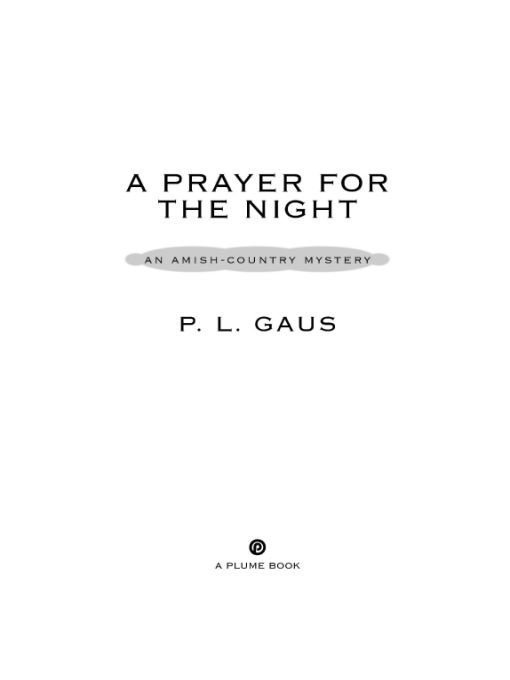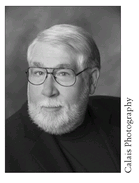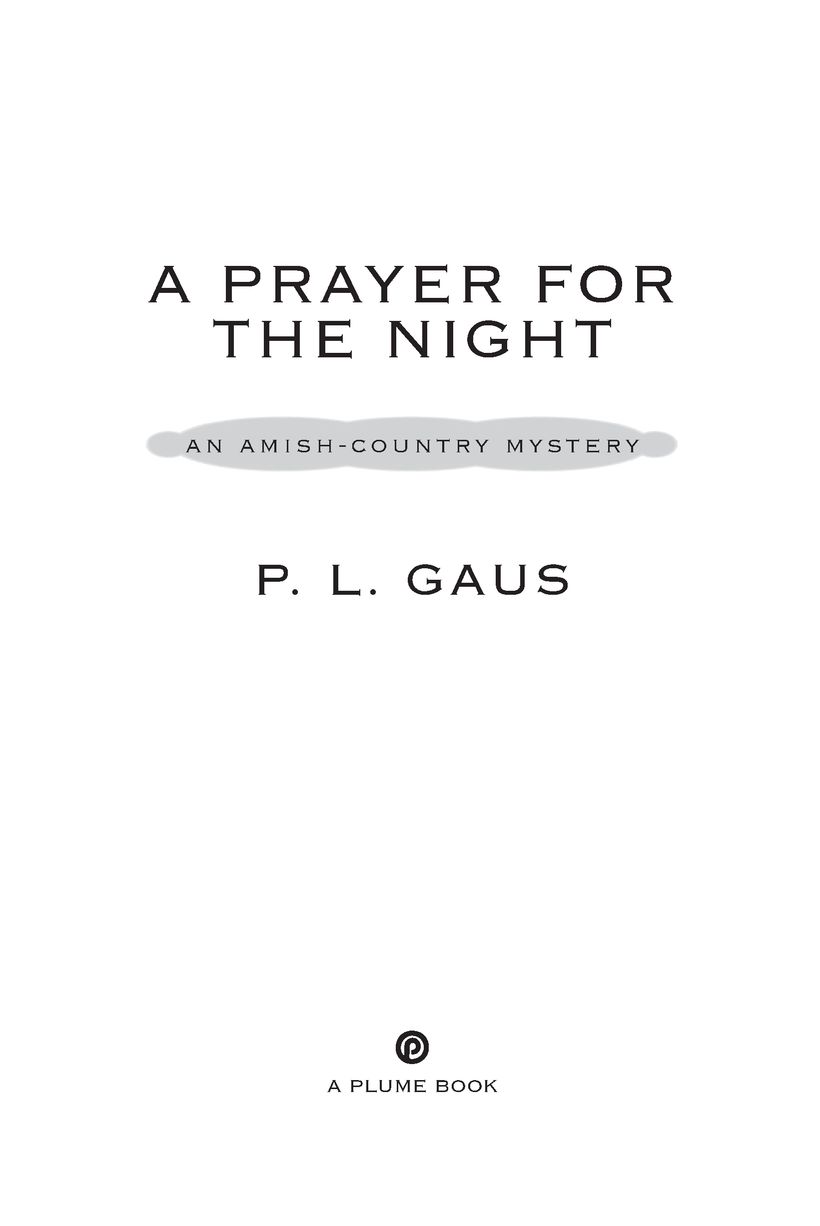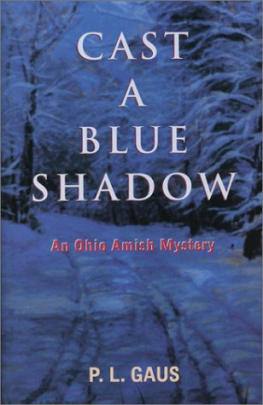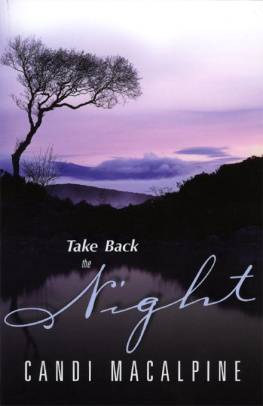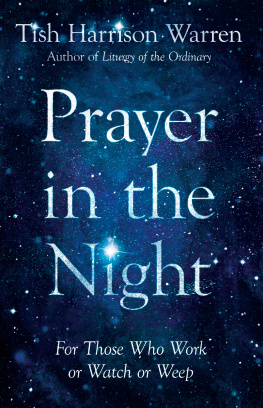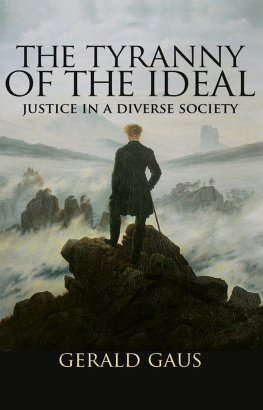Table of Contents
A PLUME BOOK
A PRAYER FOR THE NIGHT
PAUL LOUIS GAUS lives with his wife, Madonna, in Wooster, Ohio, just a few miles north of Holmes County, where the worlds largest and most varied settlement of Amish and Mennonite people is found. His knowledge of the culture of the Plain People stems from more than thirty years of extensive exploration of the narrow blacktop roads and lesser gravel lanes of this pastoral community, which includes several dozen sects of Anabaptists living closely among the so-called English or Yankee non-Amish people of the county. Paul lectures widely about the Amish people he has met and about the lifestyles, culture, and religion of this remarkable community of Christian pacifists. He can be found online at: www.plgaus.com. He also maintains a Web presence with Mystery Writers of America: www.mysterywriters.org.
For the womenMadonna, Laura, and Amy
PREFACE AND ACKNOWLEDGMENTS
All of the characters in this novel are purely fictional, and any apparent resemblance to people living or dead is entirely coincidental. The Holmes County setting for this story is authentic, but Millersburg College is fictional. The GPS coordinates for Gypsy Springs School are accurate. The practice of Rumschpringe is authentic, though rarely carried to the extremes depicted here.
In the vicinity of Saltillo, straddling Township Lane 129, there is a tree farm owned by Dick and Carol Potts. In the area, there are also two abandoned mines where Amish still chip out blocks of coal. Also, there are several old cabins used formerly by the city of Mansfield for summer camps for underprivileged and at-risk children. Near a spot that used to be marked by an old tree with an elbow-shaped trunk, there is a cave entrance that leads to a larger cavern, with a second opening to light, some hundred yards uphill from the bottom. The story is told that a log cabin was built over the upper portal of the cave, and that settlers could escape into the old cave when attacked by Indians.
The wedding ceremony depicted here has been adapted from the translation of an authentic ceremony provided by the late William I. Schreiber in his important book Our Amish Neighbors, which is still available from his estate through the Florence O. Wilson bookstore on the campus of the College of Wooster, in Wooster, Ohio.
Then we will no longer be infants, tossed back and forth by the waves, and blown here and there by every wind of teaching and by the cunning and craftiness of men in their deceitful scheming.
Ephesians 4:14
FRIDAY, JULY 23
Friday, July 23
7:45 A.M.
SARA YODER drove her black buggy in bright sun up to the high ridgelin e at Saltillo and stopped the Standardbred horse on the blacktop at the intersection of county roads 407 and 68, southeast of Millersburg. It had been two and a half years since she had entered her wild period, her Rumschpringe, quitting school on her sixteenth birthday. Just a week ago she had crossed this ridge in a red Firebird, heading north for the weekend out of her little Amish valley along Township 110 to the bars in Wooster. Dressed English and running wild. Freed from the everyday constraints of Old Order Amish life by the Rumschpringe.
Her horse was lathered from the climb out of the valley, so she popped her whip in the air and pulled forward into the shade of an oak, thinking that Bishop Raber just might have been right all along. The preachers, too. Life out there with the English was dangerous. The winds of temptation were too strong for anyone. But hadnt the Old Order allowed it? Hadnt she been set free by tradition, to get the wildness out of her system, to see all of the English world she could handle, knowing that soon, at this reckoning point in her life, shed be asked to make a decision? To turn from the world and come home to a lifetime of Amish obedience? To know full well what was out there among the English and freely decide to turn from that sinfulness and join the Old Order?
But Sara Yoder also knew too much now of what the English had to offer. She knew firsthand what life could be like out there in the world. What the real differences between an Amish and an English life were. And it surprised her that she wasnt at all sure that the English were right. Perhaps it really was all vanity and pride, as her parents had assured her.
Truth be told, Sara wasnt sure about even the small things anymore, much less about the consecrated life her parents expected her to lead. Marry at eighteen, join the Old Order congregation, raise a dozen children, and submerge her identify in conformity. Surrender who she was for the sake of humility. To be the same, act the same, live the same as everyone else. To live only for the community of believers. No longer to be an individual. No longer to be just Sara.
In the English world, Sara Yoder was beginning to like the separate person she was becoming. She liked the choice of clothes, the modern conveniences, the pace and feel of freedom. She liked the vision she had of Sara Yoder separate from everyone else, a unique and distinct personality. Free to act and do as she felt. Free to move, breathe, live in the open. Free to be herself.
In the end, though, the scrap of newsprint she held on her lap gave the lie to all that English freedom. It called her to face the truth about the dangers that were out there in the world. It reminded her that John Schlabaugh and Abe Yoder no longer answered their cell phones or returned text messages. Just when John had promised them all the means to free themselves from the vise grips of backward Amish traditions, he had disappeared. Andy Yoder, too. There wasnt going to be any great emancipation for the John Schlabaugh Rumschpringe gang of Saltillo. There werent going to be any easy answers. No easy escapes.
Sara cast her eyes to the newspaper clipping and read the cryptic lines in the correspondence section of the Budget. Four lines of numbers, demanding attention from the handful of readers who could decipher them, inserted among the scores of family letters from Amish all over the world. The Sugarcreek Budget, published each Wednesday, and mailed to anyone, anywhere, who might be interested to know what had happened recently in the lives of the Helmuths in Kansas, or the Peacheys in Ontario. Troyers, Millers, or Yoders. Who had been born, and who had died, in Texas. The quality of the wheat harvest in Mexico that year. Family news from around the world, in an Amish paper published for Amish readers everywhere.
But Sara was concerned only with the four lines of type that were meant, ominously, for her. A greeting number. A locationlatitude and longitude. And a closing number:
3
N 40 31.174
W 81 53.890
2
Only she and eight others would know what it meant. Anyone in the John Schlabaugh Rumschpringe gang that year. This was their meeting place. This was where they gathered, out of sight of their families, for their running-wild trips to town, once their chores were finished. Once the weekend had come, and they had changed into English clothes. Their parents discreetly looking aside. Pretending not to worry.

